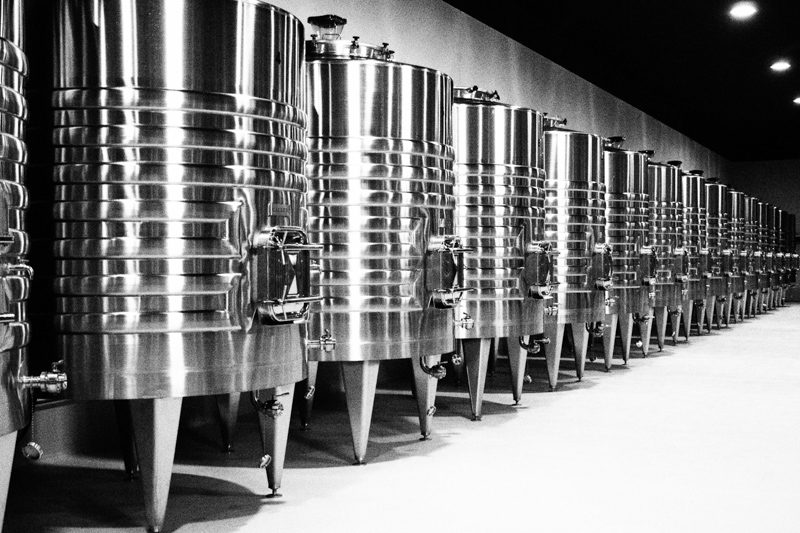My view is that limited success is the enemy of real success. Many wineries are selling enough wine that they just keep going with their current strategies, even though these are not optimal, and are actually limiting their future success.
The problem is that when things are sort of working, people are reluctant to make the changes that they need to make for true progress. There are many potentially great wine businesses that will never fulfill their potential because they are doing OK.
For example, I recently visited a winery that is doing quite well. They are family owned and their success has allowed them to buy more wineries. The result is that they have a confusing portfolio, with a number of sub-brands and different winery names, all in the same sub-region. I can’t work out which sub-brand belongs to which winery, and there’s a lot of duplication in their range.
The winemaking is very good, and the wines taste great. The packaging is OK but not great, and – as with many wineries – their various websites are terrible. They seem to have grown organically, with no real strategy. Their problem? They are doing OK, so what could potentially be a great winery with a strong international reputation is actually an OK winery with good domestic sales.
What this winery needs to do is to start again with their branding and communications strategy, consolidating their range and deciding which name they are going to build their brand equity in: preferably the winery name. As they have a few wineries in the region, it would make sense to bring them under one banner, and cut out the duplicates, making a compact range of wines under a single winery brand.
This would save the duplication of effort. This would give them a great chance to get an excellent designer in and help them build the visual element of their brand. They could then begin an effective communications strategy with one good, modern website (no flash!) and an effective social media plan.
This sort of approach could help create something great, rather than something that is merely good. But it would require courage and vision. I suspect that the limited success that they currently enjoy will prevent them from pursuing this sort of approach, and will keep them merely bolting on and adapting the existing structure on the fly, rather than tearing it down to begin again. Limited success is so often the enemy of true success. Sadly, the period of limited success is just the time to start the hard work of rethinking branding strategy. Once you get to crisis, which is normally the time people are forced to rethink their approach, it is too late, because there are neither the time nor funds available to set about this rebuilding strategy.
5 Comments on Limited success: the enemy of real success

I love Jim Collins, the management author. In “Good to Great”, he wrote “Good is the enemy of great. And that is one of the key reasons why we have so little that becomes great. We don’t have great schools, principally because we have good schools. We don’t have great government, principally because we have good government. Few people attain great lives, in large part because it is just so easy to settle for a good life.”
Great article rather than good Goode 🙂 I could mention at least ten wineries in the Cape that have this problem. One I visited fairly recently, sell most of their wine(with numerous labels and varietals)at the cellar door or through their Wine Club and seem to be content with that.
I have suggested they should make the effort to sell in overseas markets,and certainly to have far more focus on the wine they are producing,concentrating on the very best.
But they seem happy achieving good profits from average wine,rather than making the effort to produce better wine ,and diversifying into other markets.
No harm of course in having strong domestic sales,but a very risky strategy concentrating solely on that, if the local market has just too much wine, which in SA is becoming the case.
Interesting piece Jamie, along the same lines as Keith I had the same feeling in the Okanagan 10 years ago, beautiful vineyards and cellar doors, lots of tourists , v little exported – lots of ‘nice’ wines, but their report card might read ‘could try harder’! Following your recent write up on the area it would seem that at least some vineyards are now striving for greatness
I can think of a few family owned wineries where family’s have got in the way of progress, lots of children & cousins means leadership is by committee and there is no strong vision or direction. You end up in the situation Jamie describes (or similar) and it gets very difficult, especially if there is lots of money tied up in the business or high asset values. Not to mention the dreaded death duties. Succession planning is very difficult, and hard to solve
Maybe there’s an analogy with my tennis serve? I can manage with my serve as it is. It gets the ball in play with enough of an effort for the opposition to give me a slight benefit when serving. However, to improve it much further I will have to introduce elements that do not work with the other elements such as they are, and I’ll hit in the net or out. I will lose points, games and matches until such a time as they gel into one improved service motion.
So I don’t bother. One step back to (hopefully) stride forward at some unspecified future time is just too much hassle. People are risk (and loss) averse, more than they are ambitious and daring.